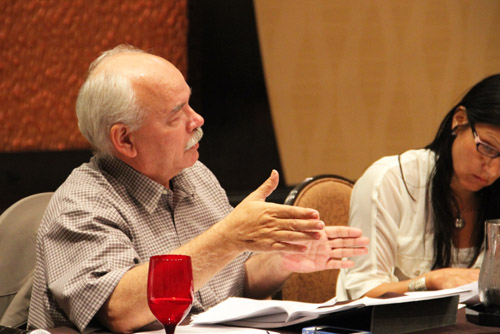
Katie Mayer, The Herald
This is the best time of the year to eat. Farmers markets are in full swing and grocery stores are overflowing with the bounty of summer.
Here’s a selection of what’s in season right now (mostly what I’ve spotted at the farmers market) and a bunch of recipes to help you make the most of it.
Strawberries and rhubarb
I can’t say enough about the superiority of sweet, tender Northwest strawberries. Only peaches taste more like summer to me. Unable to resist buying more berries than one person can reasonably eat, I used up the excess in strawberry lemonade bars and strawberry rhubarb bread (both of which were quickly consumed when I brought them to the office). Now I’m eyeing some ideas from columnist Jan Roberts-Dominguez, such as strawberry mousse, berries with Grand Marnier and cream, and these two rhubarb desserts.
Lettuce and other greens
Yeah, yeah, I know. Lettuce. Could I have chosen anything more mundane? But I beg you: if you haven’t yet, give farmers-market lettuce a chance. There is nothing mundane about it. Fresh-picked butter lettuce, for instance, is crisp, delicate and slightly sweet, and it makes an altogether more delicious salad than the green-leaf lettuce you get in the middle of winter. I like to toss it with chopped hazelnuts, sliced strawberries or grapes, chunks of goat cheese and a simple dressing of olive oil and balsamic vinegar for a quick lunch. If you prefer something heartier, check out this recipe for fennel-cumin steak salad, or this grilled steak and spring vegetable salad, which stars arugula and asparagus. And to make salad-making of all kinds easier, consider these tips for storing and prepping lettuce.
Peas and young onions
Since I’m basically a human vacuum where sugar snap peas are concerned, eating them raw as quickly as I can shell them, I never cook with them. But both sugar snaps and English shelling peas are abundant at the moment, and if you have more self-control than I do, 101 Cookbooks’ recipes for peas with butter and crostini with pea puree might be right up your alley.
Both peas and the young onions would also be good in another of my favorite quick meals, perfect all summer long: a noodle bowl with chopped vegetables.
Thinly slice your favorite crunchy vegetables, such as peppers, cabbage, broccoli, or carrots (lettuce is good in this, too, if you cool the noodles first). Cook a handful of long noodles, such as vermicelli, udon, rice or soba. Mix 2 tablespoons sesame oil, 1 tablespoon soy sauce, 1/2 tablespoon rice vinegar, 1 tsp honey and a dash of chili oil or hot sauce (this sauce is to my taste, so if it’s not to yours, experiment with different ingredients or proportions). When the noodles are done, toss them with the vegetables and sauce, and then consume with gusto. Shimp or chicken are good additions if you want more protein. For a noodle meal with less chopping, try Nigella Lawson’s soba noodles with sesame seeds.













